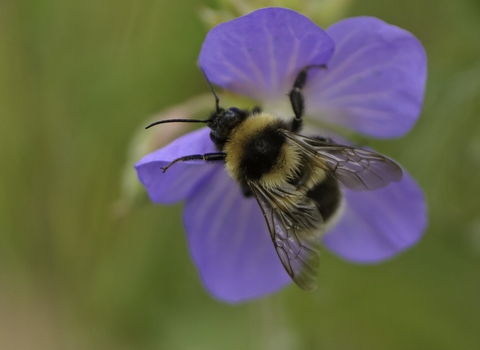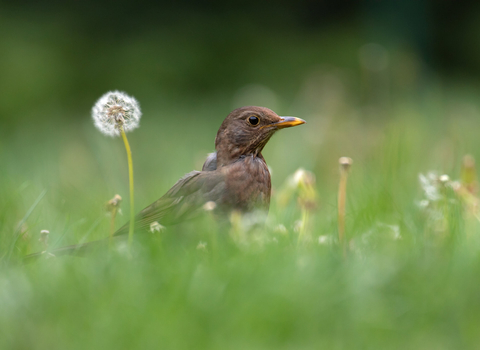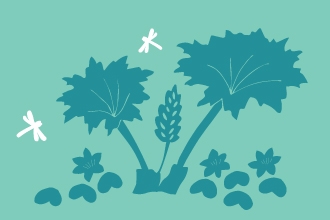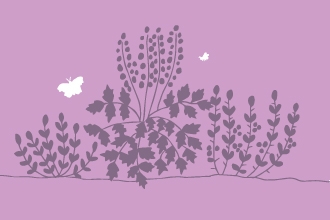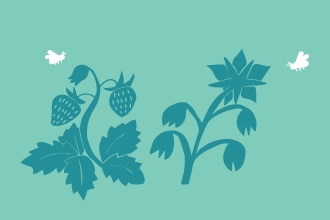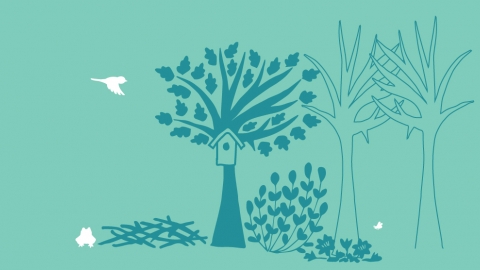
How to make a woodland edge garden for wildlife
A woodland edge can easily be translated into garden proportions. A few metres are enough to establish the sort of dynamic habitat that will encourage birds and butterflies to stop by, mice and hedgehogs to forage among the leaf litter, and frogs and toads to hibernate over winter. Mosses and lichens will add velvet and colour to the bare stems and, in spring, there will be a pageant of wild flowers, such as wood anemones, snowdrops, primroses and bluebells.
Planning your woodland edge garden:
The most important feature of a woodland edge is that it is made up of different layers – the more layers, the more species will come flocking. Ideally, the height should increase from front to back to allow as much light in as possible:
- Trees are the backbone of any woodland planting. If you have room, oak tops the charts in terms of the number of different creatures it supports: 284 insect species alone! Smaller trees like rowan, holly, crab apple and hawthorn will provide shelter for small animals and birds, as well as berries for food.
- Shrubs make up the layer beneath the tree canopy. Among those rich in food for wildlife are brambles and dog-roses.
- Herbaceous plants and bulbs at the base of the woodland edge attract bees, butterflies and other insects, and provide ground cover for smaller animals.
Don’t be too tidy – the decaying plant materials, leaf litter and rotting wood provide food sources and habitats for thousands of different kinds of organisms.
Establishing your woodland edge garden:
There are a number of things you can do to encourage wildlife into your woodland edge garden and to establish the planting :
- Plant trees first and keep the soil around them clear while they establish.
- Add the shrubs, bulbs and herbaceous plants that enjoy dappled shade underneath and between the trees. Leave room to grow, but include some overlap to give continuous cover for creatures.
- Once the upper layer is strong and tall enough, grow some climbers into the branches. Ivy and honeysuckle are really good for wildlife.
- Put up some homes for wildlife. A range of nestboxes will encourage tits, robins, flycatchers, owls and other birds to nest. Solitary bees will make use of bundles of hollow plant stems. Bats will use bat boxes made of unplaned, preservative-free wood attached to tree trunks.
- Stack fallen or dead wood in piles to provide a cosy home for small mammals, amphibians, insects and beetles. Leaf litter also provides a habitat for beetles, worms and slugs – all fine dining for birds and hedgehogs.
Maintaining your woodland edge garden:
- Don’t be too tidy – the decaying plant materials, leaf litter and rotting wood provide food sources and habitats for thousands of different kinds of organisms. Only cut down dead trees if they are dangerous.
- Keep brambles in check – while it’s best to leave everything to its own devices, you may need to take out some of the more menacing stems of dog rose and bramble.
- Have a go at coppicing – a traditional woodland practice, this involves cutting back all the stems of species like elder, hazel, birch and oak to just above the ground. This prevents the canopy becoming too thick. You only need to do it every few years.
- Use mulch – it is helpful to mulch around plant bases when they are establishing with a layer of leaf litter; this will maximise soil moisture retention.
Top tips
-
Establish which plants are most suitable by looking at what is growing in nearby woods.
- Plant broad-leaved native species as they will support more biodiversity than conifers and introduced plants.
- When planting trees, be conscious that tree roots spread horizontally, so keep them away from built structures and other areas they might be affected like ponds and streams.
- Collect fallen leaves in autumn to make leafmould and stash in plastic sacks (pierced for ventilation) somewhere out of the way. A year later, you will have a lovely supply of mulch!
Suggested plants:
- Alder Alnus glutinosa
- Bramble Rubus fruticosus
- Bugle Ajuga reptans
- Common Hawthorn Crataegus monogyna
- Crab Apple Malus sylvestris
- Dog-rose Rosa canina
- Elder Sambucus nigra
- English Bluebell Hyacinthoides non-scripta
- English Oak Quercus robur
- Foxglove Digitalis purpurea
- Hazel Corylus avellana
- Holly Ilex aquifolium
- Honeysuckle Lonicera periclymenum
- Ivy Hedera helix
- Ox-eye Daisy Leucanthemum vulgare
- Primrose Primula vulgaris
- Red Campion Silene dioica
- Rowan Sorbus aucuparia
- Silver Birch Betula pendula
- Snowdrop Galanthus nivalis
- Stinking Hellebore Helleborus foetidus
- Wood Anemone Anemone nemorosa
- Wood Betony Stachys officinalis

